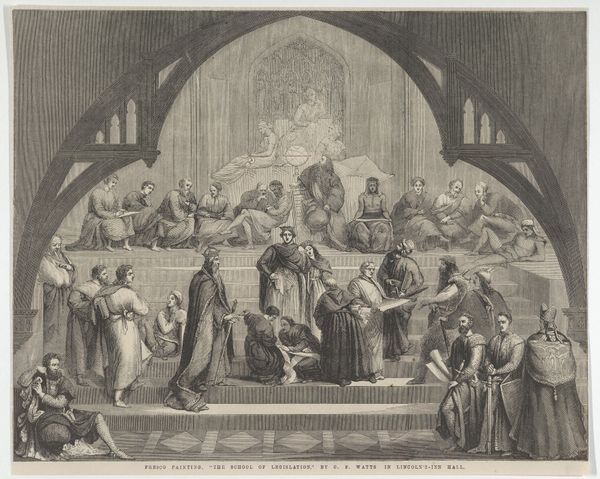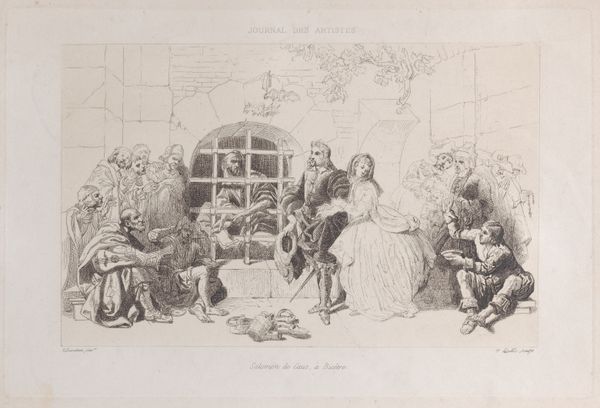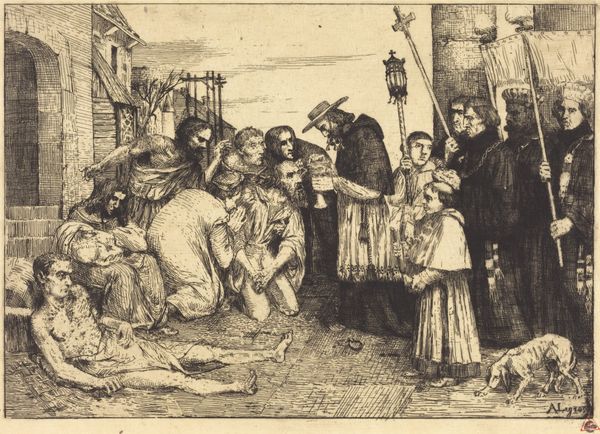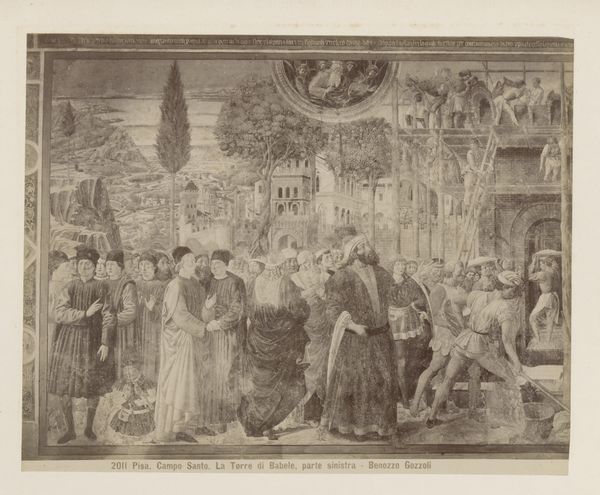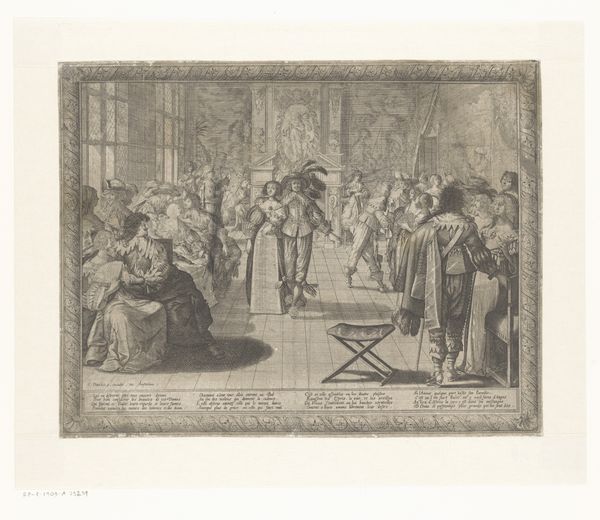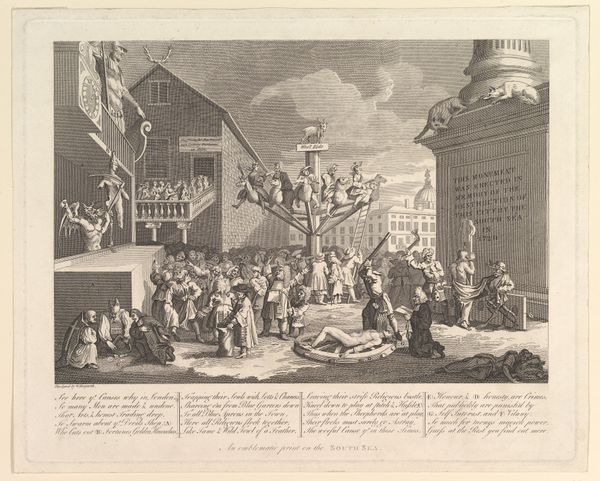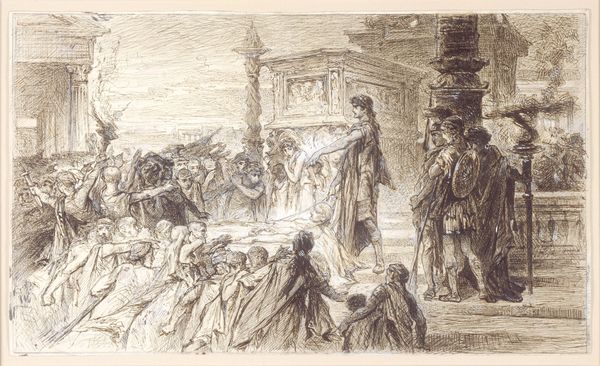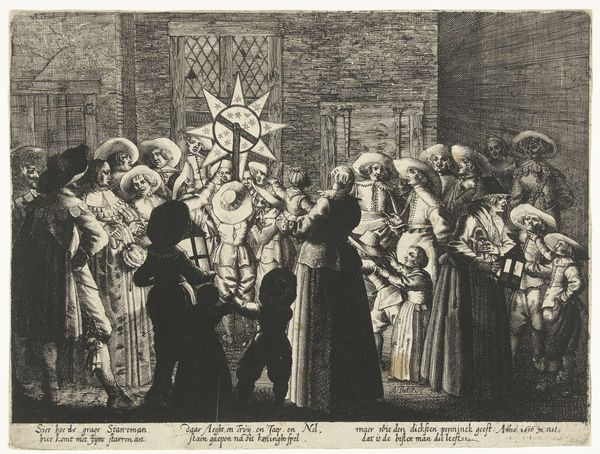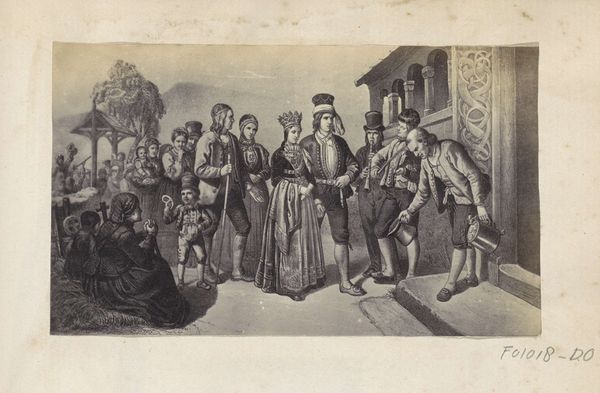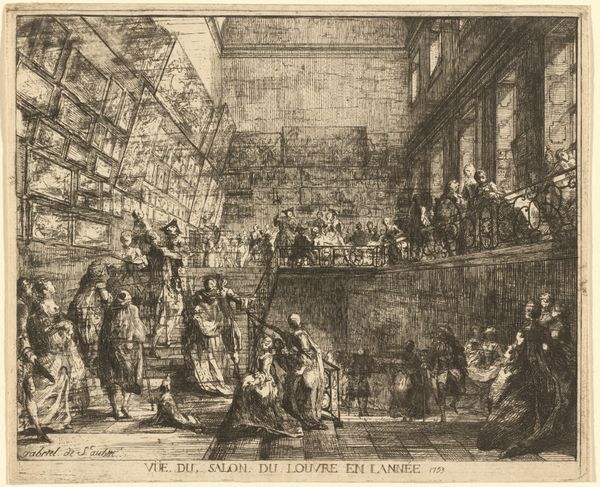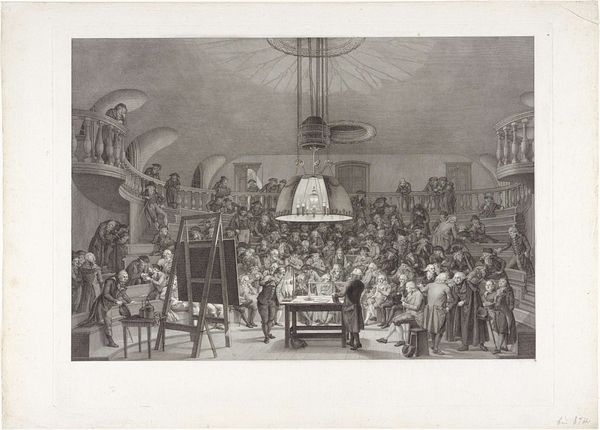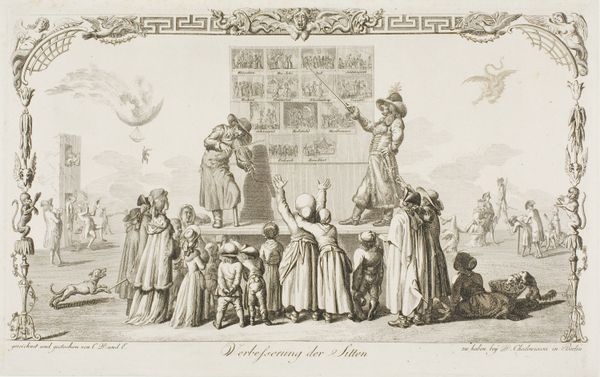
print, engraving
#
ink drawing
#
pen drawing
# print
#
old engraving style
#
romanticism
#
genre-painting
#
italian-renaissance
#
engraving
Dimensions: plate: 32.1 × 41.3 cm (12 5/8 × 16 1/4 in.) sheet: 41.7 × 54.4 cm (16 7/16 × 21 7/16 in.)
Copyright: National Gallery of Art: CC0 1.0
Curator: This captivating engraving, “La Befana,” comes to us from Bartolomeo Pinelli, dating back to 1821. Editor: My goodness, it feels like a glimpse into another world, so vivid and lively despite the stark monochrome. It has such a celebratory spirit about it, or at least I think it does... What do you think? Curator: Indeed. Pinelli captures a scene related to the Epiphany celebrations in Rome, specifically featuring the Befana, an old woman who, much like Santa Claus, brings gifts to children. It’s quite a genre painting. Editor: Genre-bending, you could almost say. So, the Befana… she’s a gift-bringer but with a slightly more complex origin story, steeped in Italian folklore, correct? Unlike Father Christmas, who’s fairly consistent in his character, she carries the weight of being perpetually in search of the Christ Child, right? Is it right to suggest that it almost embodies feminine labor? I'm reminded of Federici. Curator: Exactly. There’s that beautiful bittersweet nuance. Here, we see her presiding over a market stall, surrounded by eager children. Look at the architectural backdrop, the casual details of daily Roman life, it’s so compellingly ordinary and fantastical. The texture from the print is particularly powerful. Editor: Speaking of architecture, there's such a stark contrast represented through the window against the bustle and almost grotesque plenty of the stall, I mean look at all of those gourds! Do you think that it reflects more of the changing realities of ordinary people during the Italian Renaissance and in the post-renaissance? What were some of the driving factors that might have contextualized an increased celebration and idealization of ‘gift giving’ around the turn of the century? I’d love to think of this image as a depiction of resistance rather than tradition. Curator: An interesting angle, especially as the work employs such precise linework characteristic of the Italian Renaissance style, but rendered through the softer lens of Romanticism. Editor: And in that collision, we have this beautiful almost haunting snapshot of life—hope and despair intermingling on the Roman streets, captured through Pinelli's intricate craft. Thanks for the added detail! Curator: Indeed, a fascinating piece! Thank you!
Comments
No comments
Be the first to comment and join the conversation on the ultimate creative platform.
